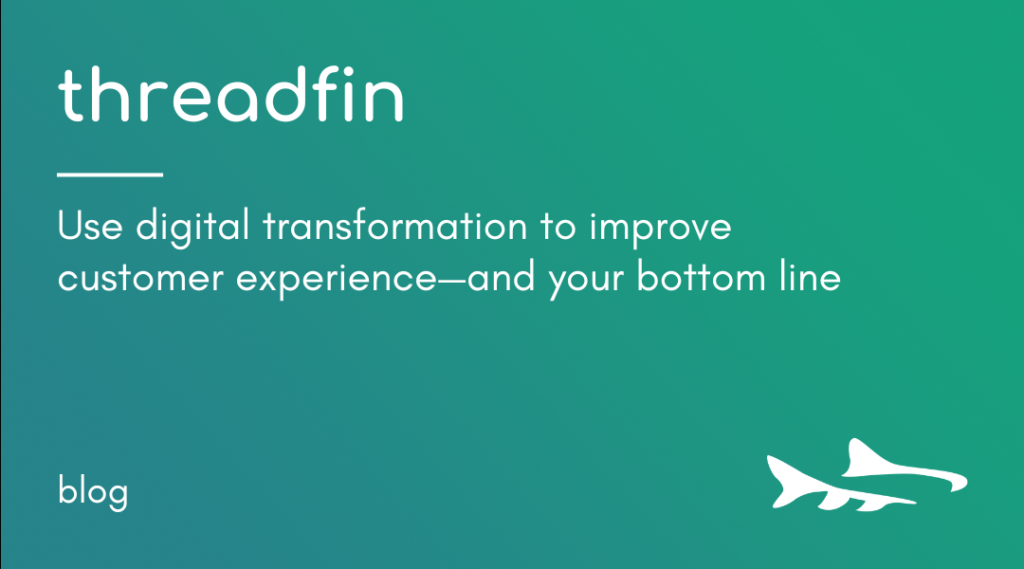There’s a lot of talk about ‘experience’ these days. Whether a brick-and-mortar or online retailer, boutique hotel, sporting event, festival, amusement park ride, product, service or a meal with friends and family—everything is about the experience.
As consumers, most of us have a pretty good idea about what makes a great (or not-so-great) experience with a company or brand. Take a moment to think about the interactions you’ve had with your favorite (or least favorite) brand.
- How do you feel about the interactions overall?
- Does the brand value you and your time?
- Are the interactions accessible, engaging and consistent? Do they meet your expectations?
- Have you spent more or less money with the brand based on your interactions?
- How has that changed over time?
Customer Experience Defined
According to experience expert, Diane Magers, CCXP, Threadfin’s Experience Practice Lead (and Founder and Chief Experience Officer at Experience Catalysts), customer experience (CX) is an ongoing process that grows and evolves every time a customer interacts with a company or brand. It starts with a customer’s perception of each interaction, and the value each interaction creates. It includes the emotions attached to each interaction, as well as the performance of the brand against the customer’s expectation over time.
In other words, customer experience is the perception and total value proposition provided to the customer, including not only the actual product, service, solutions or brand itself, but every single pre- and post-sale interaction.
According to Diane, customer experience is the cumulative impact of every touchpoint, whether digital or physical. All those front-end and back-end experiences ultimately influence a customer’s perceptions.
Further, those perceptions either strengthen or detract from the customer’s relationship with a brand. With bad experiences, customers leave. With experiences that meet (or exceed) expectations, customers are loyal, ultimately buying more and staying longer, and most likely talking about their favorable experiences with others. The result of great customer experiences is an increase in your bottom line.
Current Customer Experience Trends & Challenges
While some organizations are already laser-focused on creating delightful experiences for their customers, many are just scratching the surface.
In the past, an annual survey of customer satisfaction was considered adequate, but that will no longer suffice. Savvy companies see the value of investing in customer experience—and rightly so. They pay close attention to their customers, and work to optimize every channel, every touchpoint and every interaction in order to increase engagement, likelihood to return, brand loyalty, referrals, and, ultimately, revenue.
That’s no easy task—brands must be disciplined, and work hard to manage all interactions with their customers over each touchpoint in order to maximize the emotional connection and value to the customer. And while some touchpoints are obvious, many aren’t. It’s all too common for brands to neglect some of the most impactful—especially when it comes to digital transformation.
Experience Threading
Because customer experience is influenced by each and every individual interaction across every single touchpoint over the duration of the customer’s relationship with the company or brand, it’s important to focus on delivering a delightful experience with every touchpoint in the customer experience journey.
Threadfin’s Experience Threading is designed to do just that. Experience Threading results in human-centered digital transformation solutions that are tailored to the way your customers interact with your brand, even as that grows and evolves over time.
There’s magic—based in best practices—in providing great customer experiences. And that magic ultimately wins the adoration and loyalty of customers for years to come.

